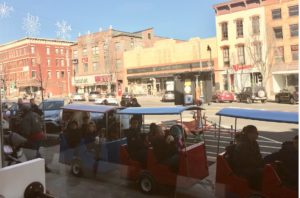On Community And Sense of Place: Holiday On Main, ‘Mainely Drafts’ Go By
Main Street. Downtown. Uptown.
The sight and sounds of a draft horse team on Main Street in Middletown, Connecticut, led to some thoughts about what makes one place different from another – and why that makes good economic sense for a community. Growing up, downtown seemed a magical place, a destination that was a visual and auditory feast. As a child, the people and places visited (hold my hand), an array of interactions, conversations overheard. Most of the subject matter was bewildering to small child, but there was so much to take in – and every place was different. Doors that opened inward; those that pulled outward – and best of all – the revolving ones. Buildings with windows full of interesting displays, underfoot metallic-looking doors to be avoided. Hydrants, decorative trim, polished marble smooth and cool to touch. Mosaic patterns in some doorways. Signage. Awnings that owners furled using a special crank handle at the end of a business day.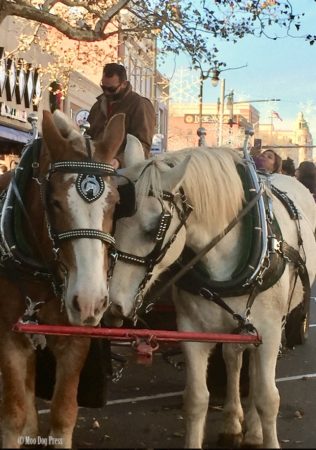
(Predestination for that child to evolve into a writer? Many chapters of explorations and life lived would be required before discovering it was possible to work in publishing, harness passions for observation, words, other abilities – but that's another story.)

Reflections of the buildings facades on the east side of Middletown's Main Street can be seen behind those waiting for a wagon ride. The sight and sounds of a draft horse team on Main Street in Middletown, Connecticut, led to some thoughts about what makes one place different from another – and why that makes good economic sense for a community.
Then came a life that involved much moving, requiring frequent transplanting across the U.S., and living in many rural communities. This is very like stepping back in time; change happened at a much slower pace. To return to what was used to be home was jarring. Downtown now had big gaps, featureless block buildings had gone up. Businesses were gone; some due to attrition, others had fled to the mall, then simply disappeared. One place looked much the same as another.
Except.
Some places didn't give in. In some towns and cities, people fought for buildings – moved them, found a way to keep structures. People spoke out, showed up to keep the character of a place. Found a way to cultivate business, earn their respect, build new connections.
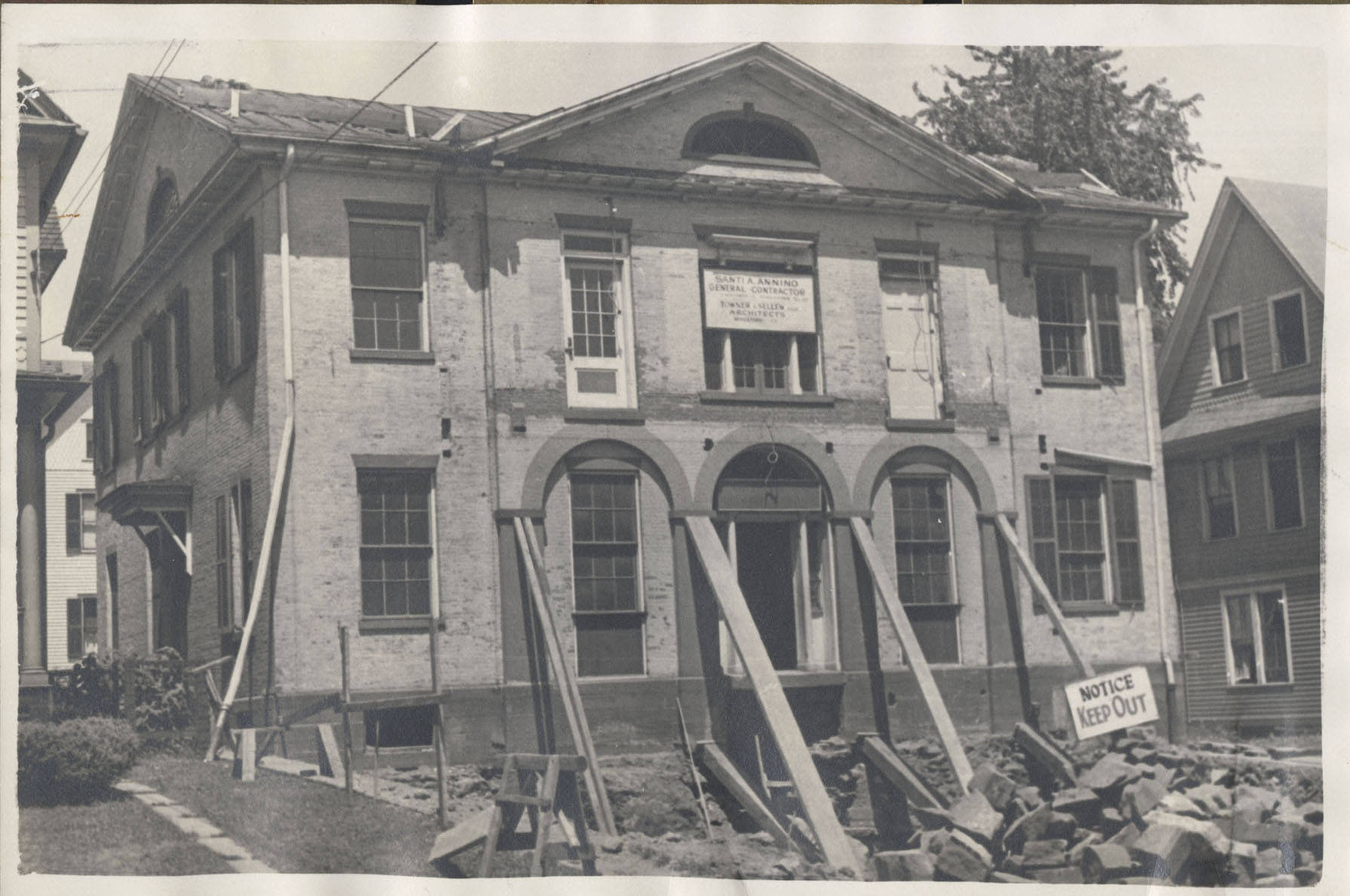
Middletown historic building 001. Original owner, Captain Joseph Wright Alsop. Present Owner [1935-37] Guiseppe Garibaldi Society. Location, 54 Washington Street. Built 1816 (D. R.); remodeled in 1935; facade now lost to view, extended 21 feet forward. From the WPA Architectural Survey, CT State Library.
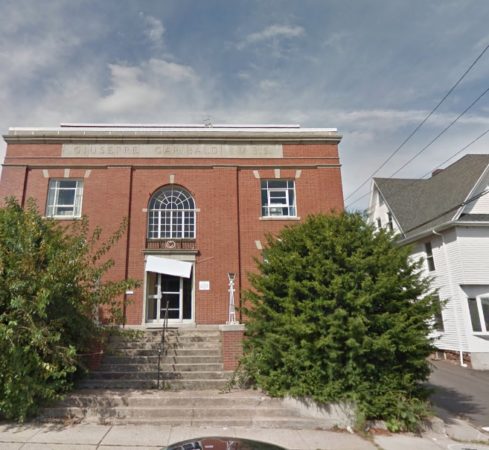
The same building as the one shown above, 54 Washington Street, as seen at Google streetview map (2016), linked to source.
Middletown, Connecticut, is one of those places. A riverport city with a storied past, vibrant Main Street, active public library, a hub for the community. The Middlesex County Historical Society and a strong Chamber of Commerce both of which front Main Street. An annual Holiday on Main Street event which began the day after Thanksgiving and will continue Saturday, Dec. 2; also Dec. 9, Dec. 16 – supported by Pratt & Whitney, a United Technologies Corporation company. The diversity of food and restaurants, especially along Main Street, draws visitors with tempting aromas year round. The small city on the Connecticut River is home to Wesleyan University. New this year on Main Street is an independent bookstore – – yes, a new independent bookstore – Wesleyan R.J. Julia. And it's a beauty. Two floors, tons of books, Wesleyan clothing, textbooks, gear; a pressed-tin ceiling design overhead complements the sleek modern, totally redone interiors. New also (inside the bookstore space) is the organic fast food cafe, “grown” (small “g”) where patrons can enjoy the views of Main Street from the wall-to-wall counter with movable seats. Perfect for a book and some thinking… maybe a fresh smoothie.
The founders of this healthy food restaurant have a mission behind their business.
From their site: “Shannon Allen is the creator of grown and our resident mom-on-the-go. Shannon lives in Miami with her husband, Ray Allen (two-time NBA champion) and their five children. Grown‘s restaurant concept evolved from her television show, The Pre-Game Meal, inspired by 18 years of preparing optimal game day meals for her husband. The show featured professional athletes and chefs preparing healthier versions of tailgate food in hopes of inspiring soccer moms and sports fans alike to embrace a healthier diet and exercise. The Allens are passionate advocates for research for a cure for Type 1 Diabetes in honor of their seven-year-old son, Walker. Shannon, Ray and their family devote their time and efforts to raise the level of awareness of T1D and its symptoms and are committed with purpose, passion and dedication to prevailing in the fight against this potentially life-threatening disease.” Here is a link to a sampling of their menu.
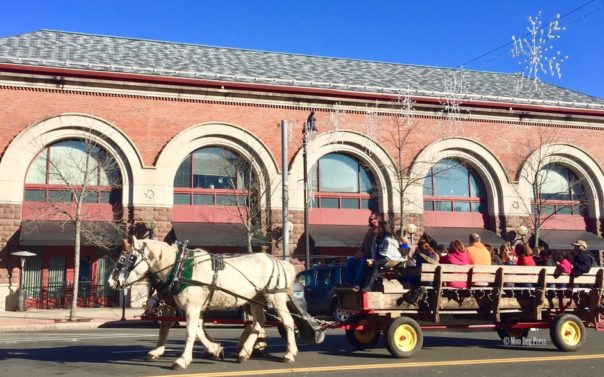
Clip, clop – Keith Ouellette and his team of Mainely Drafts Horse & Carriage, part of the free activities of Holiday on Main in Middletown. Draft horses on Main Street; a beautiful sight that got thoughts flowing.
Nationally, there is an ongoing effort called Main Street American, a program of the National Main Street Center. There is an interactive map that displays each one – by categories of accredited, affiliate and coordinating.
The goal is to “revitalize older and historic commercial districts to build vibrant neighborhoods and thriving economies by partnering with organizations and leaders at the local, city, state, and national level. And the organization powered by people has been helping revitalize older and historic commercial districts for more than 35 years. A “network of more than 1,600 neighborhoods and communities, rural and urban, who share both a commitment to place and to building stronger communities through preservation-based economic development. Main Street America is a program of the nonprofit National Main Street Center, Inc., a subsidiary of the National Trust for Historic Preservation.”
“Our approach is comprehensive, inclusive, place-based and people-focused.”
By the way, the cumulative success of Main Street programs has earned the organization the reputation as one of the most powerful economic revitalization tools in the nation. Note the mention of a 6/18/2015 study by Cushman & Wakefield that notes 500 major American companies have made the “move back into downtown.”
The National Main Street Center is based in Chicago, Illinois, with an office in Washington, DC, and field staff located throughout the country. There is a national Main Street Now Conference, March 26 to March 28, 21018, in Kansas City, Missouri; co-host, Missouri Main Street Connection.
Note: More Holiday on Main events information linked here -> holidayonmain.com.



